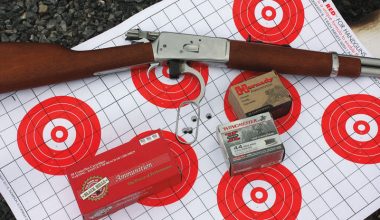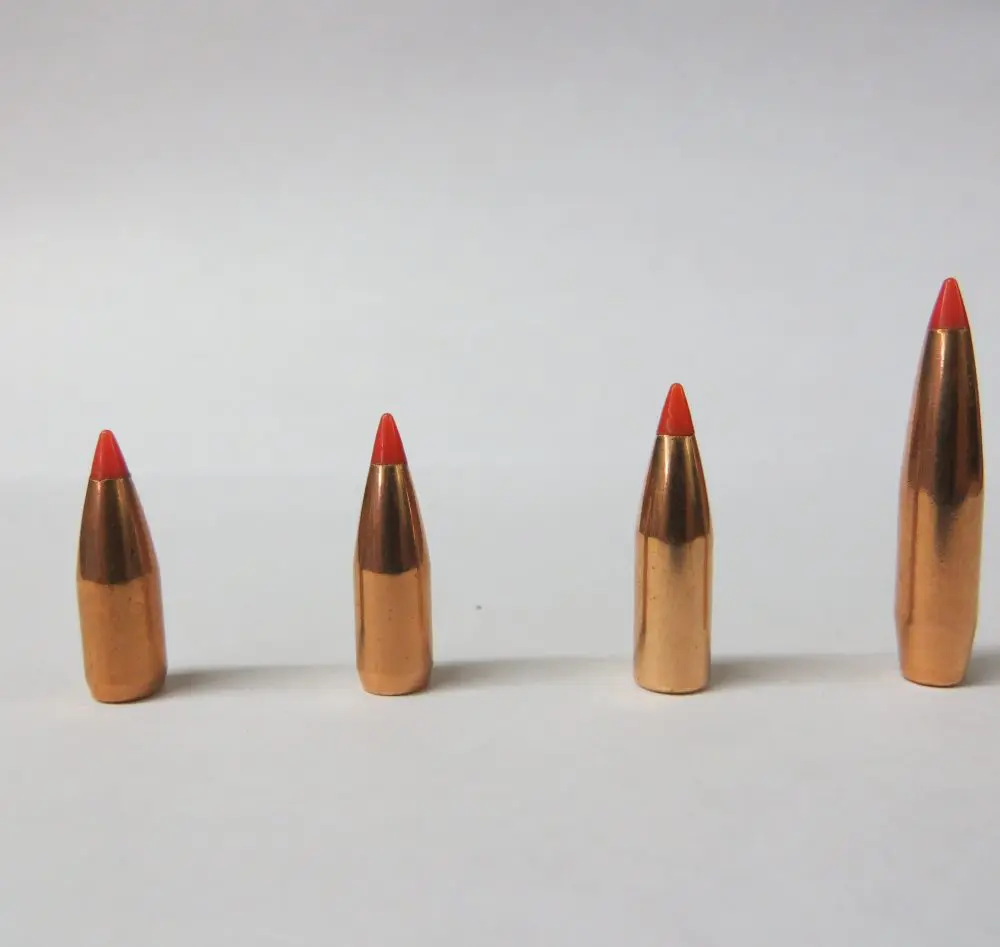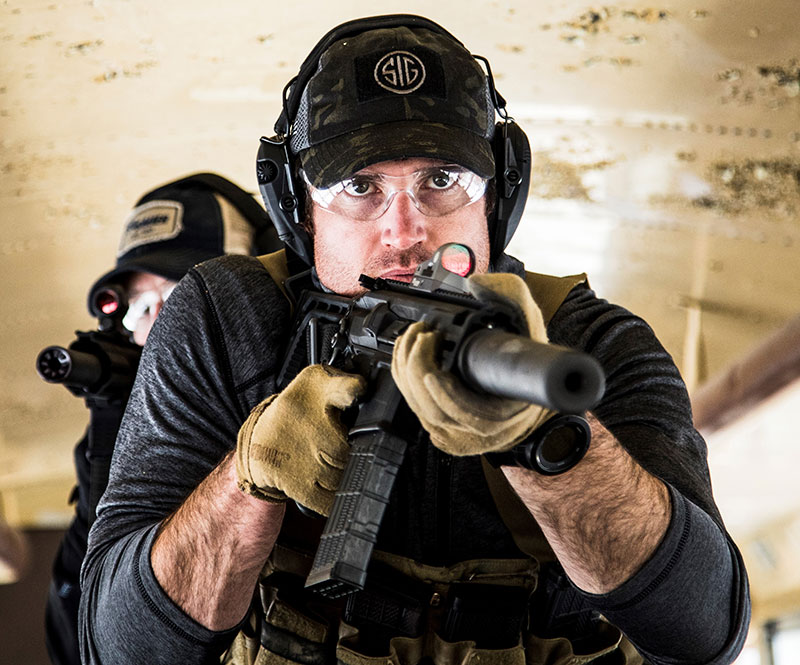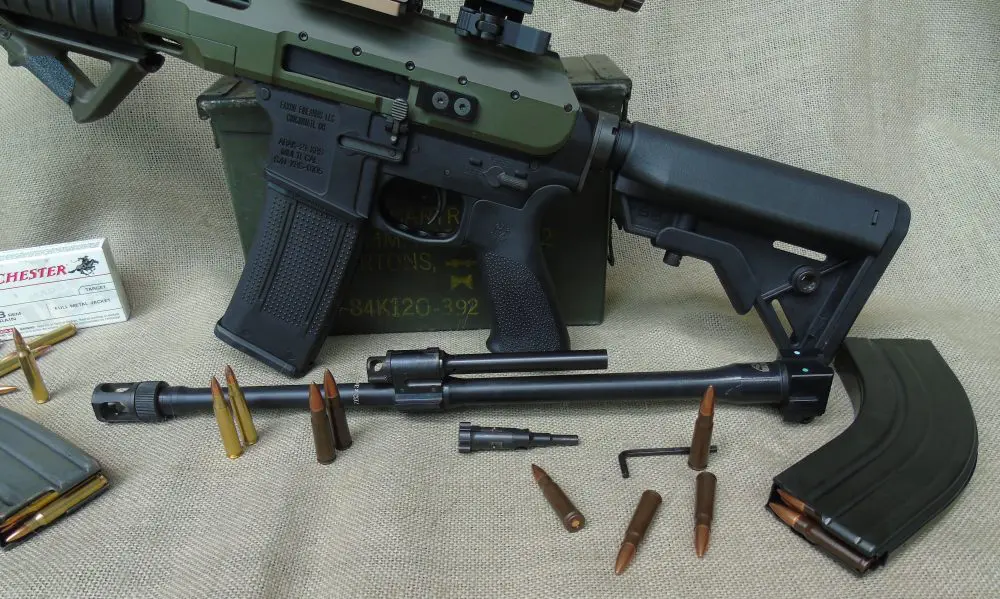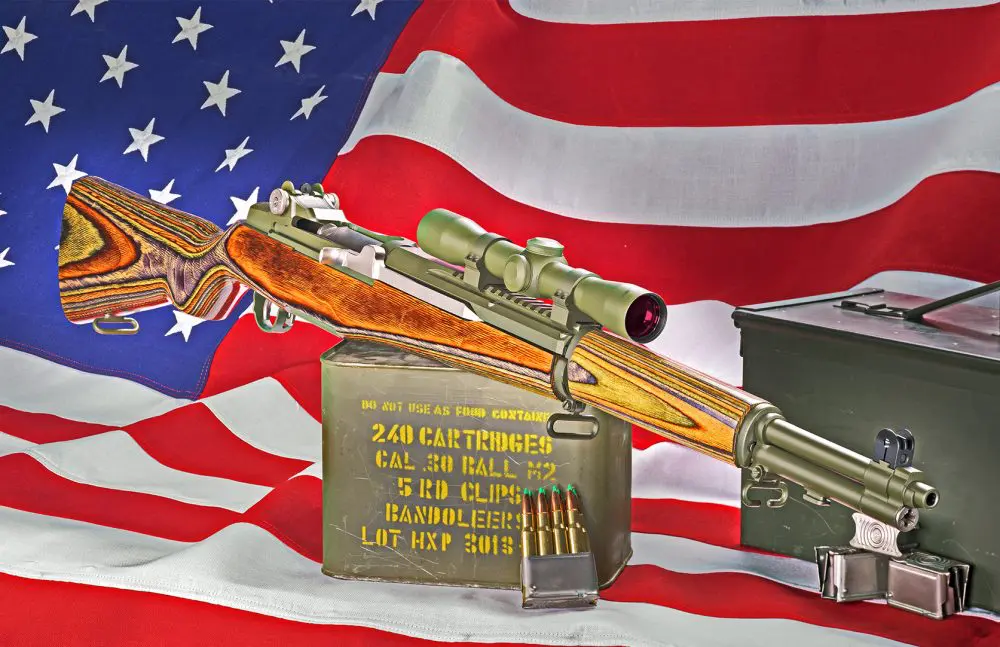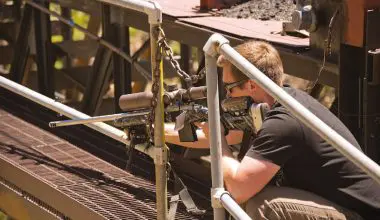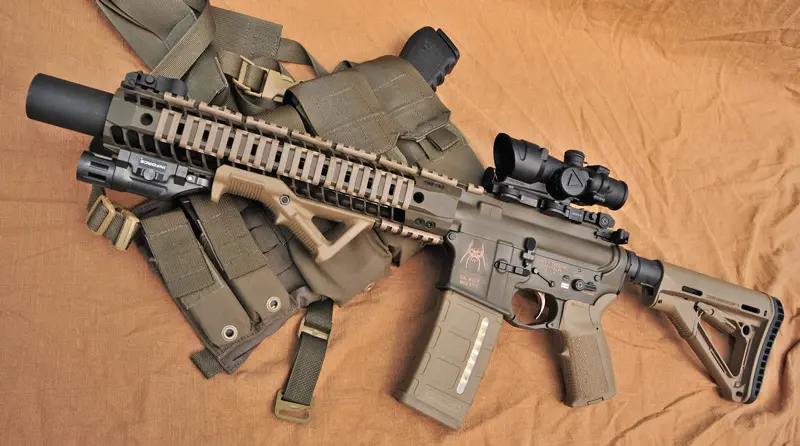
In late 2011 I was looking for a rifle manufacturer to help me put together a rifle to a set of specs that were a bit off the beaten path. It has become difficult to find manufacturers capable and/or willing to do work to individual specs. But things have begun to change, as shooters are demanding rifles with shorter barrels and longer handguards to meet their specific needs. If you intend to build a custom rifle, you need to seek out folks who are set up for this sort of thing.
Table of Contents
BALLISTIC ADVANTAGE, LLC
A friend mentioned Ballistic Advantage, LLC as a potential manufacturer to help with this build. Ballistic Advantage (BA) is a manufacturer that specializes in building AR variants to their clients’ specs. Barrels are their specialty, but they are a full-service shop that does final assembly and testing on your weapon before it leaves. BA delivers the goods with a combination of manual lathing and milling techniques complemented by their Mazak CNC mills.
BA owner Adam Wainio and I collaborated on a precision rifle that is currently undergoing testing. I will present it in depth in an upcoming article. I mention it because it was the genesis of the weapon at which you’re currently looking.
The rifle in this article only has a 12.5-inch barrel, is full-time suppressed, and is gas balanced to such a degree that it makes a neat pile of brass exactly to your four o’clock position when firing from prone. As of this writing, it has digested over 1,400 rounds of varying .223/5.56mm ammo with only one failure to feed due to the gun getting excessively fouled. It stacks round on top of round and has disproved the longstanding belief that SBRs are incapable of good velocities and accuracy. Mind you, there is accuracy, then there is precision. This rifle delivers precision.
BARREL
When it comes to rifles, everything comes down to your barrel. You can use the most expensive components, but if your barrel is not turned properly, you’ll have nothing but a mediocre rifle.
After contacting Adam, I had an idea of where I wanted to go with this new build. I was after a rough-and-tumble combat rifle that was capable of digesting everything from quality ammo all the way down to steel-cased low-pressure junk. It also needed to beat the elements with little maintenance.
I chose to go with a CMV barrel for this build as opposed to a precision stainless one primarily because stainless barrels are fussy and require cleaning each and every time they’re fired. Also, stainless barrels lose their accuracy when they’re put through the high-temp process of Melonite, which this barrel needed to have. Adam delivered a Match Grade barrel that was perfectly suited to its purpose. The specs are as follows: 5.56mm NATO, 1:7 twist, Match Grade 4150 Chrome Moly Vanadium, MP HP (magnetic particle high pressure) tested.
GAS SYSTEM
The next idea that needed to be fleshed out was the gas system. This was going to take a little creativity, because this rifle was going to be an SBR with a barrel of only 12 inches and a rail of matching length at 12 inches. This automatically removed most off-the-shelf components from the equation.
I wanted a mid-length gas system, but the combination of adjustable gas system and reflex suppressor left little room on the end to push the gas system out without going longer on the barrel. I detest a lot of barrel poking out of the end of the rail. I shoot rifles until they get too hot to touch, so rails double as heat shields for me. The gas system needed to be perfectly balanced to a specific suppressor and still cycle as precisely when unsuppressed. This rifle needed to stand its ground in the face of the demands of full-auto fire in cold, heat and grit.
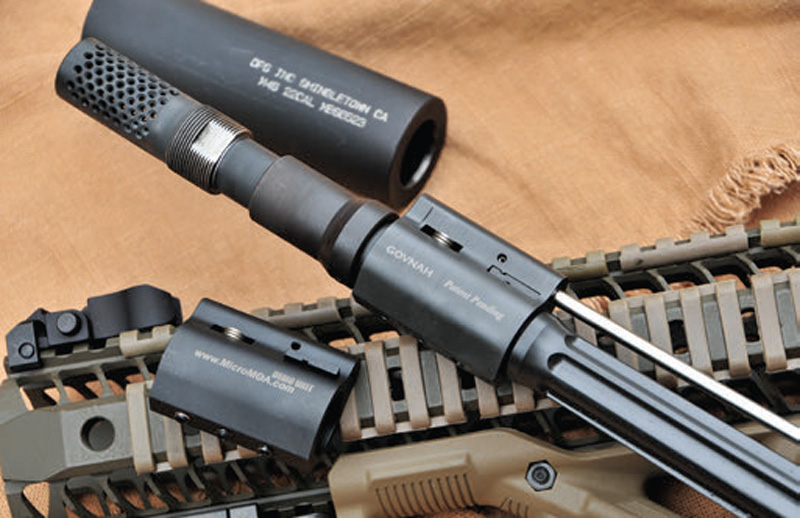
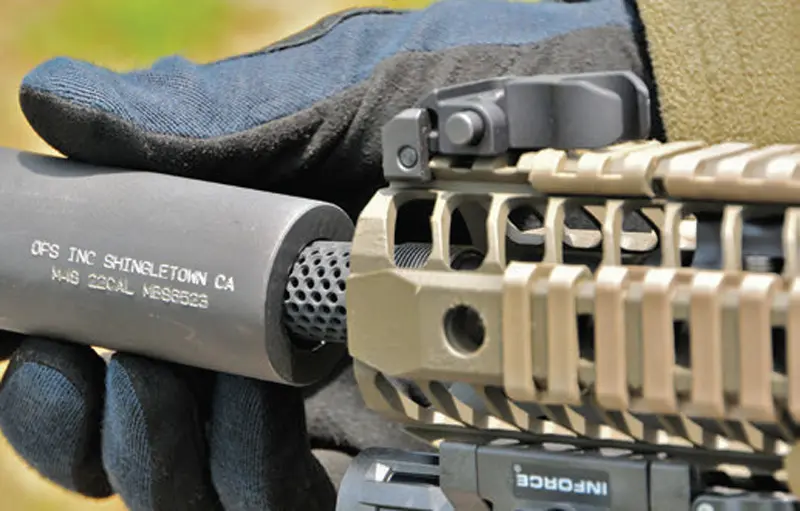
METAL DREAMS
Delivering the weapon you’re looking at took an impressive amount of coordination with several different manufacturers. Several years ago, I showed a friend a custom rifle I’d put together and he asked where I came up with the idea. My answer was that I dream in metal.
At first I laughed at the phrase, but since then I’ve cut my teeth in the R&D field by working with a few manufacturers to develop products for law enforcement. The phrase “Metal Dreams” has come to really mean something as I present my ideas to folks in the gun industry. Some guys design cars, some guys design boats—I design rifles.
Mostly for the fun of it, I chose to re-task some old and very used components for this build. The upper is actually a retasked milspec upper from the original Spike’s Tactical Compressor that I invented and subsequently helped to develop. This was a .22-caliber prototype that was the ergonomics test bed for that weapon. The lower is the corresponding milspec Compressor full-auto lower that I’ve been using for thousands of rounds of training. Even the 12-inch BAR rail was once on a precision rifle that was dismantled after it proved its point.
These components were tired looking and badly worn, but still in perfect working order. What do you do when your rifle still works great but looks tired? Paint it.
After the barrel order went in with Ballistic Advantage, I turned my attention to reviving the components. I felt that it would really drive home the point of turning ordinary into extraordinary by reviving old pieces.
With this in mind, I contacted RMJ Tactical in Chattanooga, Tennessee. RMJ makes the most rugged combat tomahawks I’ve ever seen. They coat their hawks in-house and accordingly have the facilities for bead blasting and Duracoating. I coated the upper, lower, and rail in OD Green, then boxed them up and sent them to Adam at BA.
Next I turned to tackling the gas system and choosing a suppressor.
OPS INC.
In 2010 I blew up one of my favorite suppressors, the Ops Inc. M4S (Special Applications Suppressor).
At a rifle class, I was shooting a Compressor R&D gun in full-auto bursts. During a fairly long firing evolution, I went through several mags. Near the end of mag five of an intended seven, I heard a loud bang. This was not the usual wet popping sound created by suppressed fire as heard through digital ear pro. I cleared the weapon and looked at the stream of smoke pouring from the side of the ruptured M4S suppressor.
When I returned home, I contacted Ron Allen, owner and head honcho at Ops Inc. Ron makes the cans that our Spec Ops operators rely on, and is a walking encyclopedia of ballistics knowledge. He informed me that the reason the can blew was that the design was not meant to take sustained full-auto fire from a barrel only 8.1 inches long.
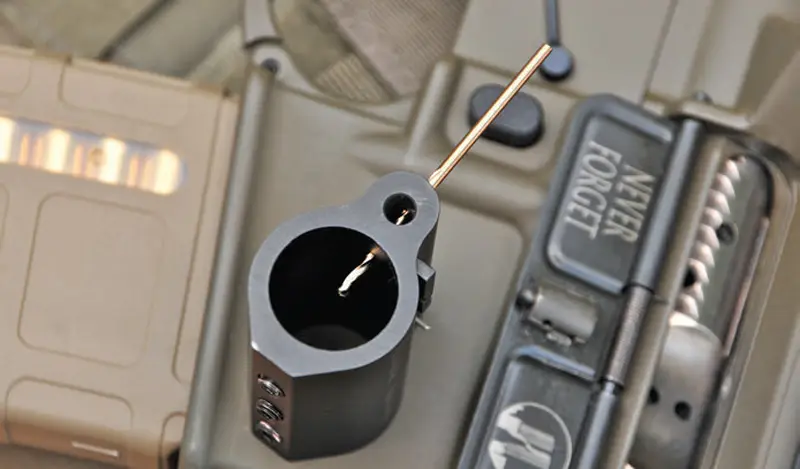
Oops!
Not only is this not letting the cat out of the bag, but Ron specifically wants this knowledge disseminated. Without turning this article into a lesson on working with suppressed SBRs, it bears noting that if you’re going to run a can on your SBR, you need to keep the barrel longer than 11.5 inches. Anything shorter is asking for trouble.
With this bit of knowledge, Ron and I set out to make a beefier M4S and, over a couple of models and a lot of rounds, we got it as good as can be gotten. Nonetheless, the warning was given that if I chose to mag dump in full auto, the can was going to fail—again. Suppressors don’t last forever, especially ones made this small and short. The M4S is a can that has more in common with muzzle devices than standard suppressors.
The M4S is 4.5 inches in overall length and weighs 11 ounces. It extends one inch past the mount because it reflexes back over the barrel and flash hider. It’s the perfect balance of weight and length to take the edge off SBR fire in semi- and select-fire, and take the explosive edge off SBRs as short as 7.3 inches.
Where it really shines is when you put it on longer barreled rifles like mine. The mount and M4S create enough backpressure that a much smaller gas port can be used on SBRs while increasing reliability. This is what I had in mind for this gun.
However, before we could get to the fun part of the muzzle flash and flying brass, I still needed to figure out what I was going to do about the gas system. The fact is that even the most perfectly gassed rifle becomes an overpressurized mess that spits in your face and launches brass forward so hard that you can often badly ding your rail. The solution? The Govnah from Micro MOA.
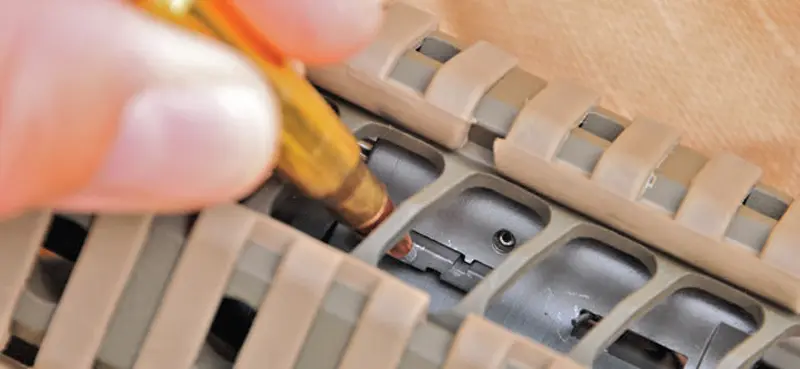
THE GOVNAH
The very name of the Govnah should tell you two things. The first is what it’s meant to do (think Cockney accent, then say it again, Govnah). The second thing the name should let you know is the great sense of humor its designer has.
Robert Soong is like most modernday innovators. He has a day job that pays the bills and an off-the-clock passion that drives him to refine his designs. Robert works as an IT professional with my brother Frank. When Frank told me about this guy who had a new gas block that I really needed to see, I was only half into the idea, because over the past umpteen years I’ve seen many inventions that were solutions looking for a problem instead of solutions to a problem.
But upon speaking with Robert, it became apparent that he truly had a well-thought-out solution to an everpresent problem. The Govnah is longer and far sturdier than your standard micro gas block. It is machined from 416 stainless for the block and 4140 for the regulator plate. Both are Melonite coated for longevity.
The aforementioned over-gassing is an issue that is ever present in suppressed rifles and/or mass-produced rifles that are intentionally over-gassed so as to run on crappy ammo.
The other reason for over-gassing a rifle is to make it continue to run when it gets badly fouled. For those who don’t know what I mean by over-gassing, that is to say the rifle has a gas port in the high range—past the customary .073inch. For example, some of my rifles have gas ports that are around .086- inch, and they launch brass violently forward of the shooter—yes, that’s bad.
The Govnah is a gas block that is designed to be installed by a proficient armorer. If you’re a tinkerer, you need to rethink attempting something like this. If your rifle is over-gassing or is just worn out from many years of firing, your gas port will be eroded to a larger diameter than is spec’d for it. Let me put it this way: the Govnah takes a mediocre rifle and makes it run like a tuned rifle.
The Govnah is installed by first removing the existing gas tube and gas block. Next, take a numbered drill bit set and find which bit fits the hole at the top of the Govnah and down into your gas port. By doing this, you can use the bit to align the Govnah with the existing gas port in your barrel prior to installing the gas tube. By using the guide hole atop the Govnah, you ensure that the regulator plate is perfectly positioned with your barrel’s port. You obviously need to do this without the gas tube in place.
After driving the alignment pin into the gas port so that it goes into the bore, tighten the setscrews, then install your gas tube. Robert purposely didn’t put the setscrew holes in the same place they would normally be on a standard micro gas block. This is to make sure the Govnah doesn’t set into holes that might have been misaligned from the outset.
The two I have are pre-production gas blocks but are 98% done. The production models will have the block engraved with an “F” for full gas on the right side and “S” on the left for suppressed. The Govnah is designed so that if you need to ditch the suppressor and go back to unsuppressed mode for any reason, you can eject the mag, cycle the bolt, then use the tip of the round to push the regulator from right to left without the use of tools.
The Govnah is modular, so making custom plates for different rounds or suppressors is simple. Swapping regulator plates is as easy as pushing the retention spring forward and sliding a new plate into place. For this build, Robert sent me a Govnah with a plate set for .073-inch for unsuppressed and .052-inch for suppressed.
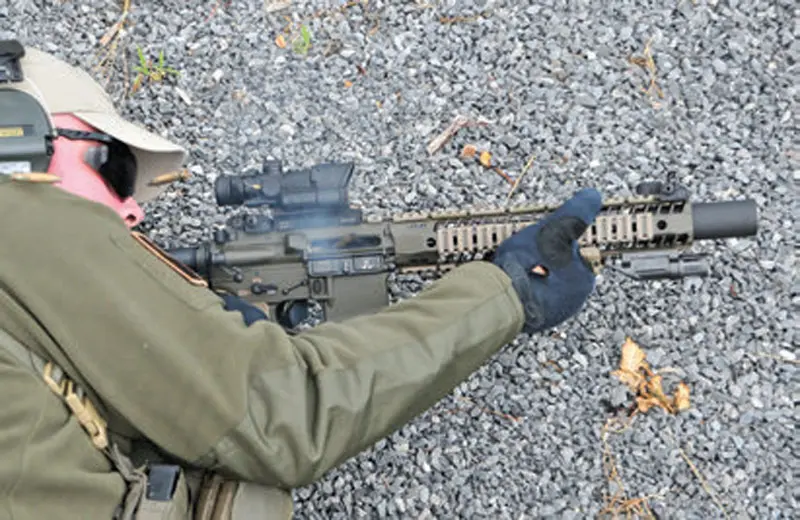
RANGE TIME
My range time was interesting. I’ve never been able to adjust a rifle so easily. I watched as the rifle delivered brass at two distinctly different angles depending on the gas setting.
The M4S shaved the report of the rifle down to a moderately annoying pop instead of the bomb-like signature of unsuppressed .223 rounds. It also slowed the rifle down considerably in full-auto fire.
This is a very welcome side effect of having a tuned gas system. In slowing the rifle down by adding dwell time, you extend the life of its parts considerably. Because Ops Inc. makes their cans to be screwed on and off without hand tools, the M4S tends to shoot loose when fired at high cyclic rates. The Govnah slows this effect down as well, and means that the can stays on longer.
The Spike’s Tactical Dynacomp that I chose as my flash hider/suppressor mount did an excellent job of controlling the muzzle rise of the rifle even in select-fire mode. When used in conjunction with the M4S, it acts as a pressure vessel between the can and the unforgiving blast created by SBRs.
Accuracy and reliability from this rifle were, as expected, consistently consistent.
I used a Trijicon ACOG on this build. As is well understood when working with the ACOG, exceptional doesn’t begin to cover the clarity of the optic. The new LED ACOG TA02 model features a welcome upgrade to the well-proven optics package of standard ACOGs. The rheostat has six settings with an off between each positive click of the knurled dial. The rheostat moves smoothly, and the illumination system is NVG compatible.
While the ACOG is a superb optic, the mounting system has always left something to be desired. In light of this fact, LaRue Tactical generously loaned me one of their QD LT100 mounts, which was a welcome upgrade. I like LaRue mounts because they offer true returnto- zero mounting options that don’t leave you guessing. I configure my rifles based on what I will be doing with them, and the LT100 allows me to swap optics by just turning the levers and pulling off the ACOG.
CLOSING THOUGHTS
With preliminary testing finished on this rifle, I consider it a “good to go” weapon. It’s going with me to a couple of upcoming classes and I’ll report on its performance, which I fully expect to be exemplary. The next time you see this rifle it should be nicely gouged up and have lots of character on it.
As for the barrel and Govnah, I trust that both will be none the worse for wear. Ballistic Advantage is known for great barrels and, while Micro MOA’s Govnah is new to the market, the manufacturers for whom they make parts respect their work.
It’s a big deal to say you trust your life and that of your loved ones to the reliability of a weapon. I now place that level of trust in this rifle.
